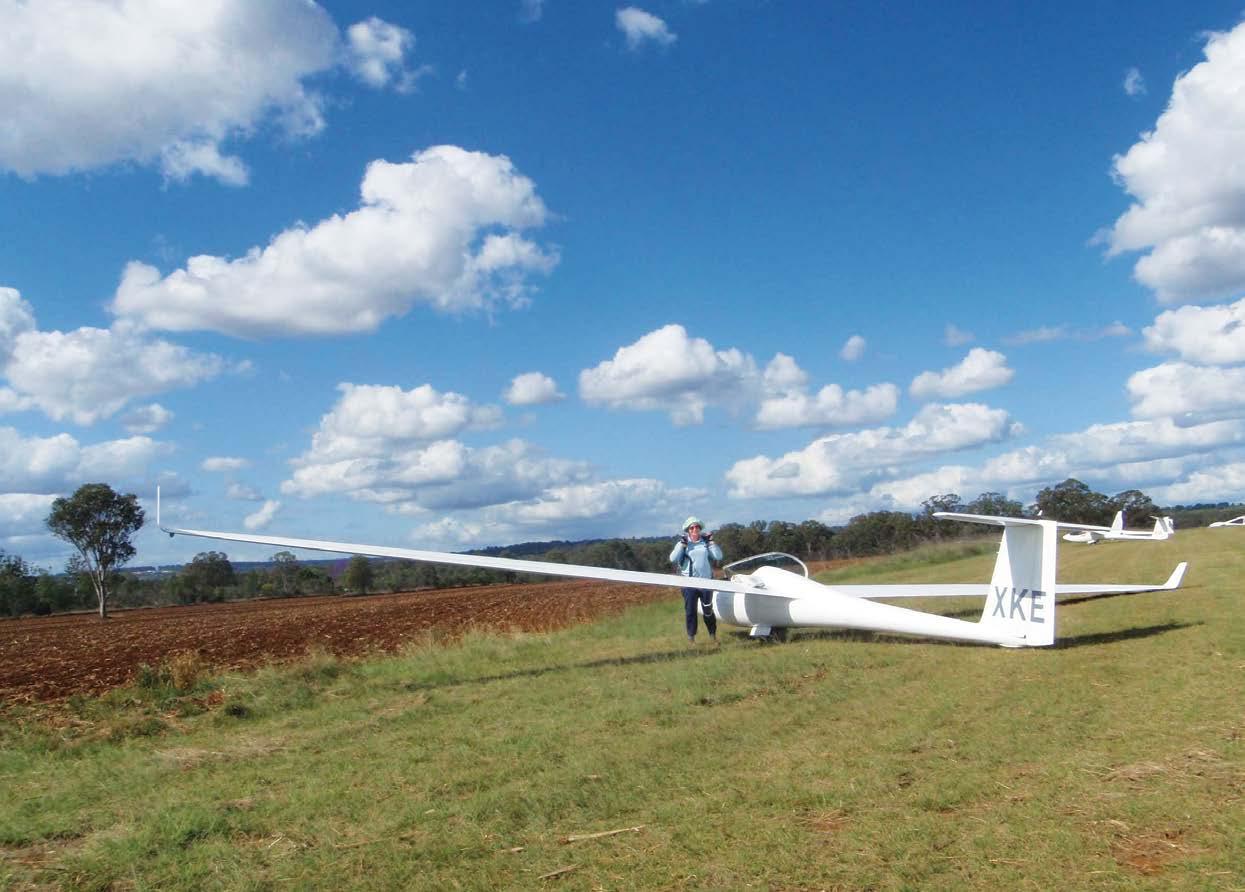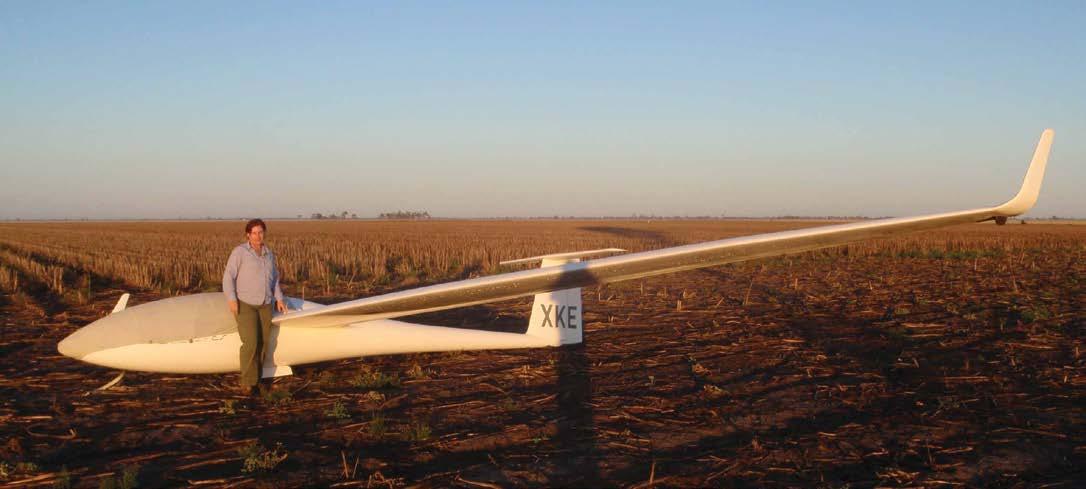
8 minute read
A Question of Safety
from SoaringNZ Issue 15
by mccawmedia
?WHY? A QUESTION OF SAFETY GEORGE ROGERS NATIONAL OPERATIONS OFFICER, ACTING 2009 was a bad year for gliding accidents –a very bad year
There were sixteen reported accidents in New Zealand since the start of 2009, in which three pilots lost their lives and four sustained serious injury. Looking at the accidents, it seems that Lady Luck prevented a further five fatalities – imagine the consequences of that!
Advertisement
In the 10 years prior to 2009, our fatal accident rate averaged 2.4 per 100,000 launches – putting us amongst the highest in the gliding world. But the 2009 fatals bumped our previous 10-year average up to 3.3 per 100,000 launches – this is roughly treble the comparable rate in the UK, Germany and the USA. Clearly, we have a long way to go in the risk management stakes.
Over the last ten years, half of the accidents occurred during soaring flights involving experienced or relatively experienced pilots. Terrain impact caused 2 ⁄3 of the fatalities (8 of 12) over the 10 years. Outlanding accidents caused the other 1 ⁄3.
In the sixteen reported accidents, nine caused the destruction of the glider and four gliders were substantially damaged. That is almost 4% of the total fleet.
I urge you to re-read the article by Bernard Eckey on Risk Management published in Issue 11 (August/September 2009) of SoaringNZ.
It is clear that pilots must understand and appreciate their current skill and currency levels so they can make informed judgements about prudent limits they should set and discipline themselves to operate to. Bernard suggests we should “review our risk profile periodically – at least prior to every new soaring season”.
We have to conclude from the review of serious accidents that Bernard’s words are prophetic, “One poor judgement will increase the probability that another will follow ... If the poor judgement chain is allowed to grow, the chance of a safe outcome decreases rapidly.”
GNZ will be putting a focus on supporting pilots at all levels in prudent decision making, especially about the limits they should set and discipline themselves to operate to.
At the end of the day, only you the pilot can make the in-flight decisions, and you need to realistically prepare yourself through honest and reasoned understanding of your skills and competencies. Opportunities to work with experienced instructors, at briefings or at periodic or Biennial Flight Reviews, to understand where you are at are a valuable opportunity to improve your safety.
“The Local Firm” A C SPIVEY REAL ESTATE LTD M.R.E.I.N.Z
OMARAMA AIRFIELD SUBDIVISION

STAGE 1 SOLD OUT, 21 PRIME RESIDENTIAL SECTIONS IN STAGE 2, 5 SOLD 16 LEFT AT AFFORDABLE PRICES PRICED FROM $90,000 TO $125,000.
SECTIONS 670M 2 TO 1595 M 2 NEW EXCITING SUBDIVISION READY TO BUILD ON. LISTING #333030.


211 Waitaki Drive, Otematata Ph (03) 438 7724 Fax (03) 434 9398 203 Thames Street, Oamaru Ph (03) 434 9010 A/h 434 6728 Mobile 027 434 0608 Contact: Tony Spivey (Snr) Email: acspivey@xtra.co.nz www.acspivey.co.nz
ONE BAD DECISION LEADS TO ANOTHER

by Sandy Griffin
Sandy Griffin is the President of the Tauranga Gliding Club. She and her husband John used their holidays last year to fly in the Queensland State Gliding Contest out of Darling Downs in Australia. They are familiar with the area, having flown from the site in the past. Sandy was flying in the Club Class when she had an accident. She shares with us the sequence of events that lead to the accident in the hope that sharing her story will help others avoid similar events. Sandy’s story is an example of what George Rogers was referring to in his safety column when he quoted Bernard Eckey’s words, “One poor judgement will increase the probability that another will follow......... If the poor judgement chain is allowed to grow, the chance of a safe outcome decreases rapidly.”
Monday 28 September 2009
First flying day of the Darling Downs Soaring Centre QLD state contest – the previous day and practice day were cancelled due to high crosswinds on 12-30. Field elevation 1230 QNH.
Today was a 15 kts and gusting, marginal, straight crosswind on 12-30. On the grid Club Class was first and I was the fifth glider to be launched – I told my husband, “I think they will delay the launch 30 minutes to an hour,” and then the call came to launch. Before I launched I heard the first glider aloft saying that he was not able to maintain drop height of 2000 feet AGL. I did think maybe I should go to the back of the grid. (That was my first mistake. I should have gone with my instinct.)
Launch went well and I released at 3200 QNH (2000 AGL). The wind was strong and I was trying to find a thermal – upwind. I saw three gliders head off downwind and when I saw them next they looked to be climbing. I thought, stay upwind, but as they seemed to be climbing I followed them (second mistake). I remembered “stay away from the launch path” and so did a dog-leg to the other gliders, losing height. The thermal was strong and turbulent and the drift was huge and towards the airspace limit, beyond which was Military Air Space. I left and at this point it crossed my mind, should I go back to the field – I did not (third mistake).
I was low near the airfield and decided to do a turn (500 feet AGL) so I could land to the right of the fleet as instructed at briefing
if landing for a relight while launching was underway. I had not realised that the launch had stopped. I then did a turn and by now had become fixated with landing in the correct place (fourth mistake).
I turned again at 300 feet AGL and realised this was a bad mistake (my fifth). All I remembered was to keep the speed up (put the stick and trim full forward) so as not to stall and spin in, and when the turn was completed I was heading straight in and across 12-30 at 65 kts and in ground effect. I was over a cropped paddock and all I had to do was open the airbrakes – I did not (sixth mistake). I had become fixated with making the strip and all I could see then was that I was between the tugs and the gliders and thought they might be launching so tried as I reached the edge of field to turn slightly (seventh and last mistake). As I eased my grip on the control stick to attempt to turn a little I dropped the right wing (approximately 5 feet AGL) and could not hold it. The wing touched the ground causing a severe 180 degree, cartwheel type, ground loop – this resulted in the glider being damaged.
Result:
I sustained only bruising to the right knee area and a sore forearm and right side for about 24 hours.
The damage to the glider: rudder cable area was damaged, tail wheel damaged, canopy popped and damaged and electronic wires pulled out from some instruments. It had to go away for repairs and checking for any structural damage.
What had happened?
After each mistake my judgment became more impaired and in the final three mistakes my vision became more tunnelled. I was probably only reacting at the final two mistakes and not decision making.
I underestimated the strength of the wind and sink. In Queensland the thermals can be very strong but so can the sink and the area between thermals can be a long way too.
I underestimated that you can lose 200 feet plus in a turn in the strong conditions we had.
I over-estimated my 300 hours ability.
Things I Could Have Done Better
I should have gone with my first instinct and gone to the back of the grid. If I have any doubt about a launch I won’t launch
After launch – my plan was to stay upwind and this is what I will adhere to – if it makes sense.
I should have cut off at a safe height, and in that day’s conditions that would have been 800-1000 feet AGL. I need to do a complete circuit for the conditions or modify to land anywhere safely on the field or surrounding paddocks.
I need to remember the airfield is just another outlanding if conditions are difficult. Even without a radio call, everyone in the operations team is watching and will not let the tug and glider launch if there is a conflict.
I should not get fixated with landing where the briefing states if that is unsafe due to conditions.
I need to make decisions early – earlier in difficult conditions, and fly the glider to land in a safe manner.
Remember FLY the Glider in a safe manner at all times – make early decisions and modify if needed – don’t deviate from landing protocols where possible. Forget about contest rules/conditions if it means a safe landing; where possible call up on the radio to tell your intentions.
Observation:
Once you have made a mistake – each mistake you make after that becomes compounded, your visual responses narrow down and overload shrinks your ability to make clear/good decision making.











